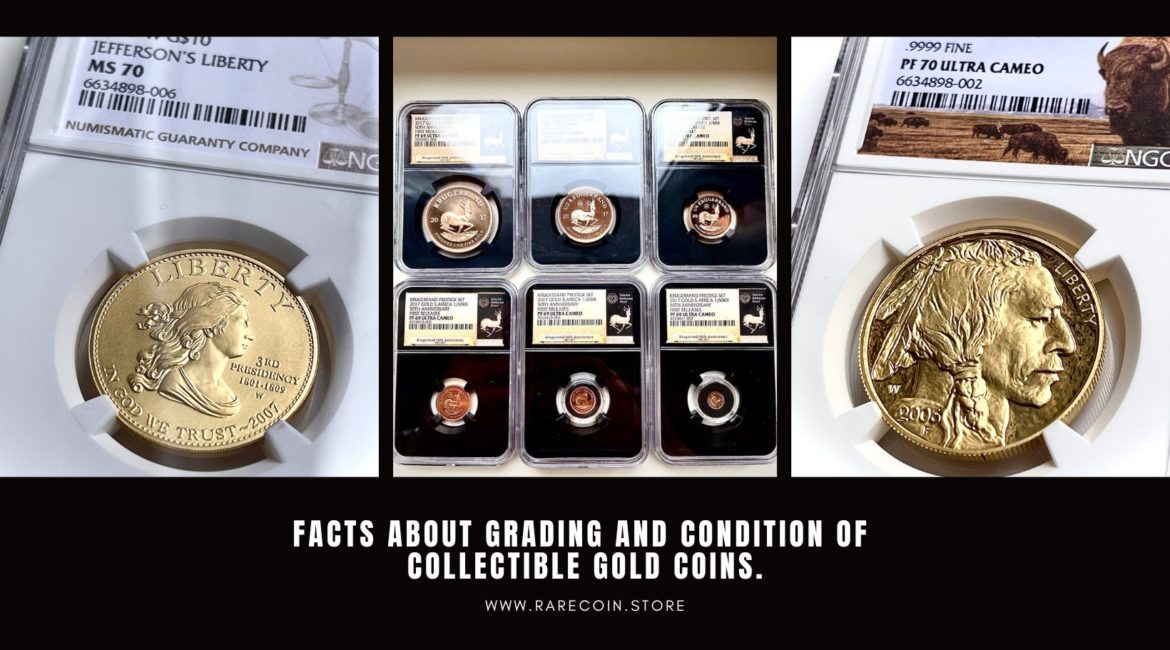Gold collector coins have a special appeal to numismatic enthusiasts and collectors around the world. These exquisite pieces of craftsmanship embody history, artistry and intrinsic value, making them highly desirable treasures. To truly appreciate and understand the value of these remarkable coins, one must delve into the fascinating world of coin grading.
Coin grading is a meticulous process of evaluating the condition and quality of a coin and assigning it a grade that reflects its overall state of preservation. For gold collector coins, grading is even more important because it determines their desirability, rarity and ultimately their market value.
A widely recognized rating system is the Sheldon Scale, named after its creator, Dr. William Sheldon. This scale uses a numerical rating system from 1 to 70, with 70 being the highest level. However, for gold collector coins, additional factors such as luster, minting, and appearance are often included in the valuation, contributing to the overall appeal of the coins.
The highest grades on the Sheldon scale, called“Mint State” or“Uncirculated” grades, are reserved for coins that look like they just left the mint. These coins have full luster, sharp strikes, and no visible signs of wear or damage. They are impeccable examples of numismatic craftsmanship and command the highest premiums among collectors.
The more wear a coin has, the lower it is rated on the grading scale. Grades such as Uncirculated (AU), Extremely Fine (EF), Very Fine (VF), Fine (F) and Very Good (VG) denote varying degrees of wear, with VG coins showing the most obvious signs of circulation. While these coins do not have the pristine appearance of coins in mint condition, they still retain much of their original detail and are often sought after for their historical value.
Below VG, coins are generally considered inferior. Grades like Good (G), Fair (F) and Poor (P) indicate significant wear, with P coins barely recognizable due to heavy circulation and damage. While these coins have limited numismatic value, they can still be of historical significance and are sometimes collected for their rarity.
About Proof Gold Coins
Apart from the numerical grades, gold collector coins may be given additional designations that highlight certain characteristics. For example, a coin may be called“proof” if it has been minted with special care and precision on specially prepared flakes. Proof coins are known for their reflective surface and detailed design. These coins are often produced in limited quantities and are highly sought after by collectors.
Proof gold coins are a special category of coins that are sought after by collectors and investors alike due to their exquisite craftsmanship and limited availability. These coins are minted with custom dies and dies, resulting in coins with exceptional detail, sharpness and mirror-like finish. While their gold content makes them valuable, it’s the superior quality and unique presentation that sets proof gold coins apart from their regular counterparts.
The manufacturing process of proof gold coins involves several careful steps. First, the coin dies are carefully polished to remove all irregularities. Specially selected metal plates (planchets) are then thoroughly cleaned to ensure they are free of blemishes or contaminants. These plates are usually made of pure gold or alloys with a high gold content.
After preparation, the platelets are struck multiple times with tremendous pressure into polished dies to create deeply mirrored fields and sharp, matte design elements. This creates a striking contrast between the polished background and the raised, frosted motif, which adds to the visual appeal of the coin.
Proof gold coins are often issued in limited mintage and with a predetermined maximum mintage. This rarity combined with their exceptional quality makes them highly sought after by collectors. The limited availability increases their desirability and consequently their market value. Proof-quality gold coins are interesting to collectors not only for their precious metal value, but also as works of art that showcase the mint’s craftsmanship and artistry.
Moreover, proof gold coins are usually accompanied by certificates of authenticity, which further prove their origin and quality. This documentation creates additional confidence and security for collectors, ensures the origin of the coin and increases its value.
The popularity of proof gold coins among collectors can be attributed to several factors. First, the aesthetic appeal of these coins is undeniable. The mirror finish and intricate details make it an eye-catching piece that attracts those who appreciate fine craftsmanship and numismatic beauty.
Secondly, proof gold coins are highly sought after due to their limited mintage and exclusivity. Collectors are often driven by the desire to acquire unique and rare pieces for their collections. The limited supply and potential for appreciation over time also make these coins an attractive investment.
Finally, proof gold coins have historical and cultural significance that appeals to collectors. Many coins feature iconic motifs, commemorate important events or pay homage to famous personalities. Owning a piece of history in the form of a proof gold coin connects collectors to the past and adds a sense of heritage to their collections.
Graders evaluate the overall impression of the coin, taking into account factors such as toning, coloring and originality. Toning refers to the natural oxidation process that can give a coin a unique patina or hue. While attractive toning can increase the attractiveness of a coin, excessive or unattractive toning can have a detrimental effect on its value.
Upon completion of the thorough examination, graders assign a grade on a standardized scale that often ranges from 1 to 70. The highest grade, usually 70, represents a perfect coin with no visible blemishes under magnification. The lower the rating, the more wear or imperfections the coin has.
PCGS uses the abbreviation “PR” for proof, while NGC uses the abbreviation “PF”.
The grade assigned significantly affects the value and marketability of a proof gold coin. Collectors and investors prefer coins with higher grades due to their rarity and immaculate condition, for which top prices are demanded at auctions and on the market. Coins with lower grades may still be of historical or numismatic importance, but are generally less appreciated due to their imperfections.
“First Strike”, “First Release” and “Early Release” for Collector Coins
Collectors are also attracted to coins with special markings such as “First Strike,” “First Release,” or “Early Release,” which indicate that the coin was among the first minted or issued by a particular mint or grading service. These markings can increase the desirability and marketability of a coin, especially if they are accompanied by a high valuation.
In summary, proof gold coins are becoming prized possessions for collectors due to their exceptional quality, limited availability, aesthetic appeal and historical significance. Their appeal lies in the combination of their intrinsic value as precious metals and their status as unique, beautifully crafted works of art. Whether they are sought after for their investment potential or as sought-after collectibles, proof gold coins are captivating numismatists around the world. Professional grading of collectible coins helps collectors and investors determine the value and appeal of these exquisite numismatic treasures, making the hunt for gold coins even more fascinating for enthusiasts around the world.
You may also be interested in:
What is important to know about the numismatic value of gold coins?
What do you need to know about grading coins and what does PF/PR or MS mean in coin grading?
Discover the new additions to our gold coin collection in the current range!
-
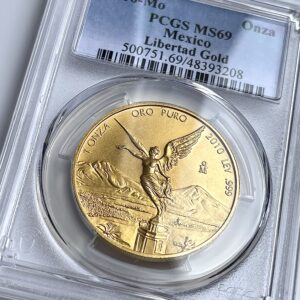
Mexico – 2010 – Libertad – Gold coin 1 oz – PCGS MS69
3.150,00 €plus shippingDelivery Time: approx. 2-3 days (excluding Saturdays, Sundays and public holidays) -
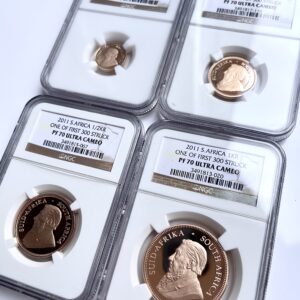
Krugerrand – 2011 – Set – One of First 300 – 4 Gold Coins Proof – NGC PF70 UCAM
5.500,00 €plus shippingDelivery Time: approx. 2-3 days (excluding Saturdays, Sundays and public holidays) -
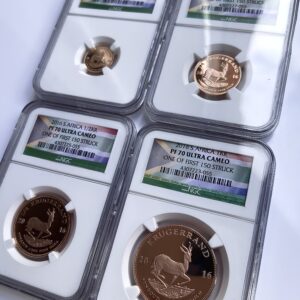
Krugerrand – 2016 – Set – One of First 150 – 4 Gold Coins Proof – NGC PF70 UCAM
5.500,00 €plus shippingDelivery Time: approx. 2-3 days (excluding Saturdays, Sundays and public holidays) -
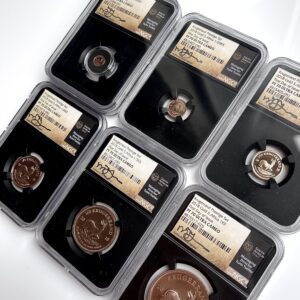
Krugerrand – 2018 – Set – First Day of Issue – 6 Gold Coins Proof – NGC PF70 UCAM
5.750,00 €plus shippingDelivery Time: approx. 2-3 days (excluding Saturdays, Sundays and public holidays) -
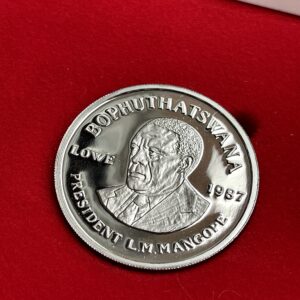
Bophuthatswana – 1987 – 10 years of independence – platinum – 1oz – with original case and certificate
2.195,00 €plus shippingDelivery Time: approx. 2-3 days (excluding Saturdays, Sundays and public holidays) -
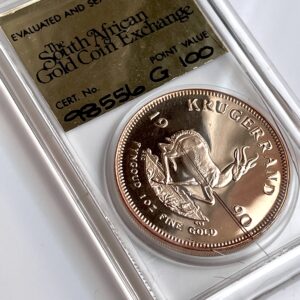
South Africa – Krugerrand – GRC – 1990 – SAGCE PoV 100 – 1oz Proof Gold
3.250,00 €plus shippingDelivery Time: approx. 2-3 days (excluding Saturdays, Sundays and public holidays) -
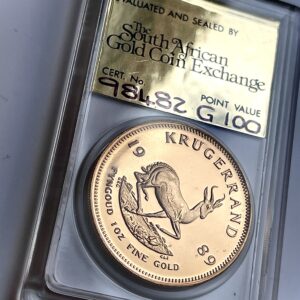
South Africa – Krugerrand – GRC – 1989 – SAGCE PoV 100 – 1oz Proof Gold
3.250,00 €plus shippingDelivery Time: approx. 2-3 days (excluding Saturdays, Sundays and public holidays) -
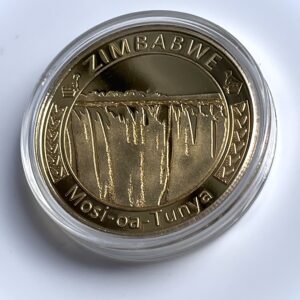
Zimbabwe – 2022 – Mosi-oa-Tunya – 1oz Proof Gold
3.150,00 €plus shippingDelivery Time: approx. 2-3 days (excluding Saturdays, Sundays and public holidays) -
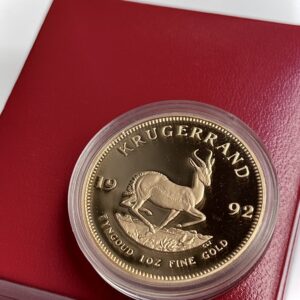
South Africa – Krugerrand – 1992 – 1oz gold coin proof with box
5.750,00 €plus shippingDelivery Time: approx. 2-3 days (excluding Saturdays, Sundays and public holidays) -
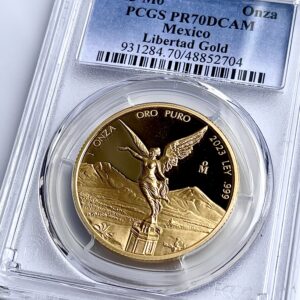
Mexico – 2023 – Libertad – Gold Coin Proof 1 oz – PCGS PR70 Deep Cameo
2.950,00 €plus shippingDelivery Time: approx. 2-3 days (excluding Saturdays, Sundays and public holidays)

